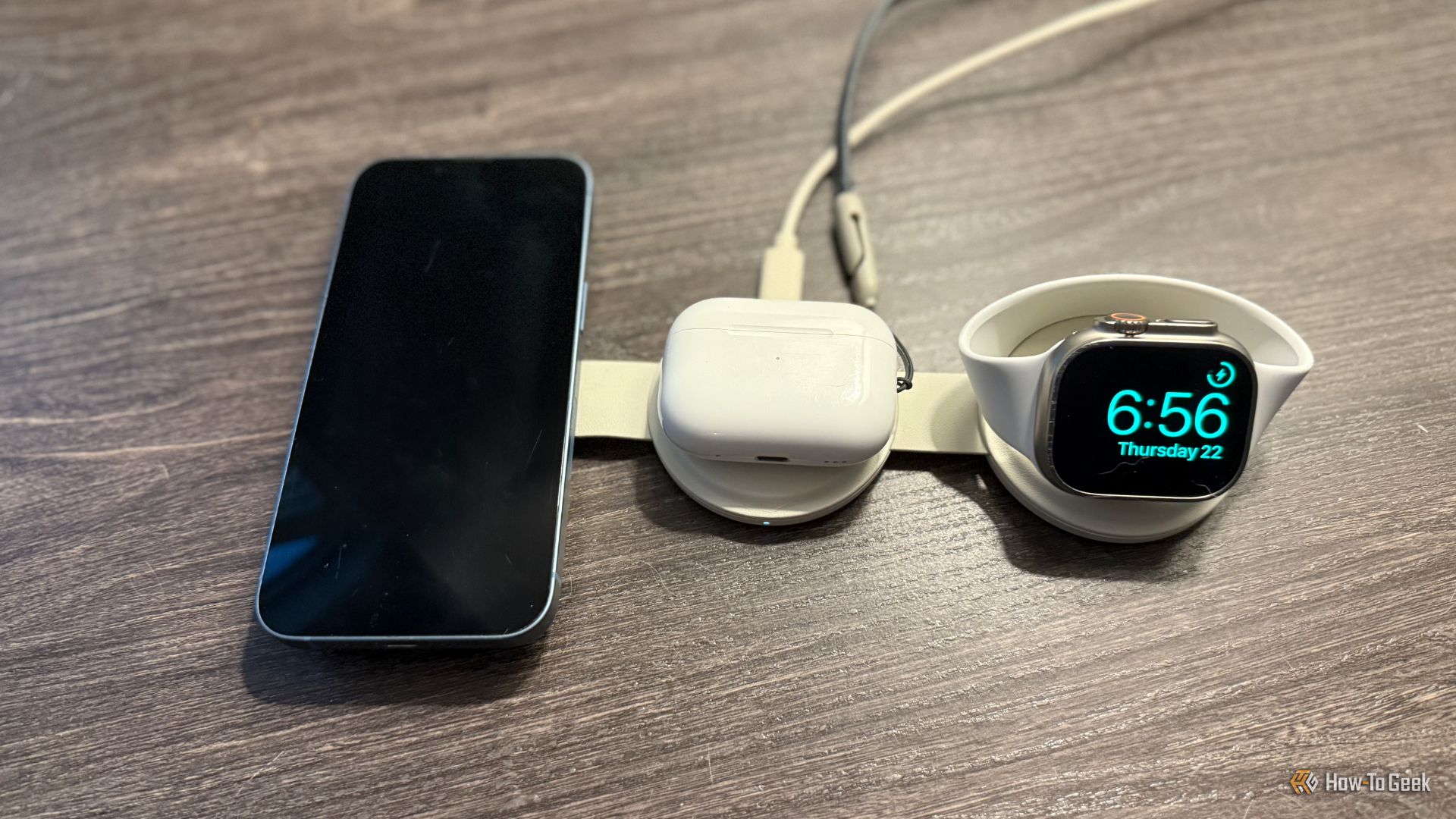Is the IVR Menu Dead? Well, That Depends

Interactive Voice Response (IVR) menus seem old-fashioned compared to today’s AI-driven alternatives like conversational IVR and interactive virtual assistants (IVAs).
So I don’t blame you for thinking that the IVR menu is obsolete, too old-fashioned to use in a world where customers interact with brands through apps and chatbots.
But it’s not dead at all.
The basic IVR menu is still a critical component of customer support strategies, thanks to its efficiency, cost-effectiveness, and proven ability to handle high call volumes with minimal fuss. Even with the surge of AI in call centers, traditional IVR menus excel at providing simple, reliable, and structured interactions that many customers prefer for quick resolutions.
For example, IVR payment systems streamline collections by enabling secure transactions without the need for an agent or app. This is just one of many efficiencies that highlight the unique value IVR brings to customer support — at a fraction of the cost of AI-enabled alternatives.
First, I’ll go through the main reasons that this nearly-ancient technology is so incredibly valuable to modern businesses. Then I’ll cover key aspects of menu design, so you can set up a smooth IVR phone tree that helps the highest possible percentage of callers.
1
RingCentral RingEx
Employees per Company Size
Micro (0-49), Small (50-249), Medium (250-999), Large (1,000-4,999), Enterprise (5,000+)
Medium (250-999 Employees), Large (1,000-4,999 Employees), Enterprise (5,000+ Employees)
Medium, Large, Enterprise
Features
Hosted PBX, Managed PBX, Remote User Ability, and more
2
Talkroute
Employees per Company Size
Micro (0-49), Small (50-249), Medium (250-999), Large (1,000-4,999), Enterprise (5,000+)
Any Company Size
Any Company Size
Features
Call Management/Monitoring, Call Routing, Mobile Capabilities, and more
Seven reasons IVR menus are (still) useful
1. Cost savings at high-volume
One of the main benefits of IVR is the significant cost savings it offers call centers operating at scale. Acting as an automated receptionist, an IVR menu reduces the need for excessive staffing by managing the initial wave of customer inquiries. Compared to hiring and training more people, IVR is a much lower-cost way to reduce high call queueing times.
For example, companies using IVR can handle thousands of calls daily about payment due dates or account balances, eliminating the need for live agents to repeat this information. By offloading routine tasks like these, IVR frees up agents to focus on complex issues that require personal attention, allowing businesses to optimize staff resources and reduce labor costs effectively.
2. Streamlined call flows and operations
IVR menus improve efficiency by guiding callers through structured pathways, automating routine tasks, and connecting them to the right resources quickly. Different types of IVR routing can be used to direct calls to the right agents or self-service options.
For example, a healthcare provider can use IVR to route appointment scheduling calls directly to a dedicated team or provide automated updates on lab results. This reduces wasted time, allowing staff to focus on high-priority calls, ultimately enabling the call center to handle more cases with the same resources.
3. Smarter, faster, more secure customer service
By offering options for call prioritization and queue callbacks, IVR menus minimize customer wait times and improve resolution rates.
For example, a bank’s IVR menu can prioritize fraud-related calls and offer automated callbacks for less-urgent inquiries. This targeted functionality ensures customers receive timely assistance, enhancing their experience and satisfaction with the service. A banking IVR system streamlines caller authentication, providing the right balance of security and convenience.
I’m using banks as an example because it highlights how secure and dependable these solutions are — but any company can build IVR menus that offer their customers the same thing with the built-in IVR with one of the best business phone services.
4. Automated data collection
IVR can also be used to collect customer data automatically, which helps businesses and organizations gain greater insights into their customers and clients. As long as you are creating effective IVR surveys, you can find out a ton of useful information.
For example, an e-commerce IVR menu can prompt customers to leave feedback after completing a return request. You may learn something that can help you decrease the rate of these issues and save your company money.
You can also learn more about your customers to better personalize offers. For instance, a travel agency IVR menu can ask customers about basic preferences such as budget or desired types of vacation. This data is then automatically logged and used to tailor follow-up recommendations or pass on relevant information to a travel agent.
5. 24/7 customer support
An IVR menu isn’t tied down by typical workday hours. Instead, it functions 24/7, giving customers the information and support they need, even on weekends, in the middle of the night, and during holidays.
With this constant availability of customer support — especially self-service options like bill pay — your customers will feel less stressed if they need important information at any time of the day.
6. Fewer call handling errors
By allowing customers to navigate and select options themselves, IVR menus reduce the risk of misrouted calls or agent errors. For example, a telecom provider’s IVR menu can sort inquiries into categories like billing or technical support based on customer input. This self-guided process ensures customers are directed to the right resource, minimizing frustration and improving overall accuracy.
7. Reinforced brand identity
IVR menus can reflect a business’s brand through customized voice prompts, messaging, and menu design. I strongly suggest you take advantage of these options — a generic IVR menu without an original greeting doesn’t necessarily create a positive first impression with people calling in for the first time.
For example, a luxury hotel chain might use a professional, calming voice and bespoke on-hold music to align with its high-end image. This attention to brand identity through the IVR menu enhances the customer’s perception of the company, strengthening loyalty and trust.
When an IVR menu works (and doesn’t)
An IVR menu works well in scenarios where customers need quick access to simple, routine information or tasks that don’t require personalized assistance. For example, it’s effective for handling large volumes of calls related to account balances, appointment scheduling, or order tracking. In these cases, an IVR system can save time for both customers and businesses by automating responses and guiding callers to the appropriate self-service option.
However, IVR menus may not be suitable when customers face complex issues or need personalized support. Situations involving troubleshooting, disputes, or highly specific questions are better handled by live agents who can assess and resolve unique circumstances. In such cases, IVR may frustrate customers by providing limited options and requiring multiple transfers.
Alternatives to IVR menus
These alternatives can be used alongside existing menus to enhance the customer experience. In some situations, these alternatives can replace an IVR menu entirely. Each option offers distinct advantages:
- Live agents: Ideal for personalized support and resolving complex or sensitive issues that require human judgment.
- Voicemail: Suitable for capturing customer messages when agents are unavailable, with follow-up once the issue is reviewed.
- Interactive virtual assistant (IVA): AI-driven systems that provide conversational support, capable of addressing more complex inquiries than traditional IVR.
- Chatbots: Real-time AI-powered assistance through websites or apps, helping customers with tasks such as order tracking or FAQs.
- Email support: A good option for customers needing detailed responses or preferring asynchronous communication.
- Self-service portals: Online platforms that allow customers to manage accounts, check status, and access FAQs without agent interaction.
- SMS/Text messaging: Useful for providing quick updates or resolving simple inquiries through text without requiring a call.
- Social media support: Customer service via platforms like Twitter, Facebook, or Instagram, enabling engagement where customers already interact with brands.
- Web forms: Online forms that allow customers to submit requests or questions, which can be addressed by the appropriate department.
These alternatives can be strategically combined with IVR to create a more flexible and customer-centric support system. For example, you could offer an option in the IVR menu for customers to receive SMS updates for things like order status or appointment reminders. This way, customers can get quick information without needing to speak to an agent.
Why not use an automated hold message to direct customers to a self-service web portal while they are waiting for an agent? Let them know they can manage their account, track issues, or find answers to common questions instead of waiting on hold.
Interested in these alternatives? Learn more about how an IVA differs from traditional IVR and when it’s safe to use chatbots in call centers.
How to design a useful IVR menu
If you’re looking to optimize your IVR menu, keep these best practices in mind to ensure a seamless customer journey and the best customer experience possible.
Map out the customer journey and experience
Carefully map out IVR call flows with the customer experience at the forefront of your mind. As you build out individual menus, keep the customer journey simple and intuitive. Make sure the options are clear, easy to navigate, and lead customers to the quickest resolution, whether through self-service or agent support.
It’s a good idea to create a visual map of all your departments, as this can help you make a sensible call-routing plan that maximizes efficiency and minimizes transfers. Simplifying IVR menus is one of the cheapest and most effective ways you can improve contact center CX.
Use a realistic-sounding voice
Choosing a realistic-sounding voice will make customer conversations more natural and help them feel more at ease. A familiar and natural voice can also elevate your organization’s branding and customer retention efforts.
SEE: Learn more about making an IVR recording if you have never done it before.
Keep menus clear and concise
A menu that’s too long and complex will frustrate customers, interrupt their journey, and lead them to a poor experience. In fact, many customers will abandon the process altogether if it’s too complicated. Here are some rules of thumb:
- Limit IVR menus to five or fewer options.
- Prioritize the most common inquiries.
- Include the number selection before the menu option (e.g. For sales, press 1).
- All menus should be 10 seconds or less.
- Each menu description should be 5 seconds or less.
By keeping everything simple and concise, the customer is much less likely to feel overwhelmed or lose patience.
Always give the option to speak with a live agent
It’s always important to give customers the option to speak to a live agent right away in case the menu doesn’t present any options that they specifically need.
If the option to speak directly to a live agent is buried in a submenu or nonexistent, customers can grow frustrated and abandon the call. Some customers may simply feel more comfortable talking to a live agent or have trouble working with the menu. In any case, just be sure to include the option to speak directly with a live agent in your main menu.
Address FAQs without slowing down service
IVR menus are an excellent tool for addressing frequently asked questions without taking up agents’ time, but it’s important to be strategic. Not every caller is going to be interested in this information, so you need to make it readily available without forcing everyone to listen.
Consider creating an IVR menu option for an FAQ menu where customers can easily access key information like hours, locations, and other other common questions. This way, callers can skip the FAQ section if they need more personalized assistance.
You don’t need fancy IVR software to have good menus
There is really amazing IVR software out there, but nearly all of the benefits I’ve outlined and design tactics I’ve advocated for in this post are possible with the basic IVR system on the cheapest VoIP phone services.
Creating effective IVR menus is more about thoughtful planning than costly software. By focusing on your customers’ needs and mapping out clear, simple options, you can design a system that works well without breaking the bank. A well-organized IVR menu is the result of understanding your customer journey and using your resources to make their experience smoother and more efficient.
Source link











